Silver-amalgam fillings are made from an alloy containing 50% mercury. These are the most common fillings found around the world. Unfortunately, its physical characteristics violate many structural principles in tooth integrity.
Being an unstable metallic alloy, it is subject to corrosion.
Its excessive expansion and contraction to temperature fluctuations induces cracks within the tooth structure.
The material is not bonded to tooth structure, therefore it allows for micro leakage and decay to develop around its margins. Decay eventually creeps in under the filling and over the years spreads undetected, until a large chunk of the tooth fractures off, or a toothache develops, leading to expensive root canal therapy and crown restoration.
Its placement necessitates compaction into undercuts drilled into the inner aspects of the tooth, so it doesn’t fall out. This in itself, plus the fact that the top protective enamel covering, carefully and ingeniously engineered by nature, is drilled away and violated, represent a serious breach in the integrity and stability of the walls of the tooth. These walls, being subject to everyday chewing forces, will eventually chip away, develop internal cracks, or outright break apart.
Example 1:
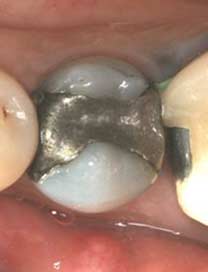
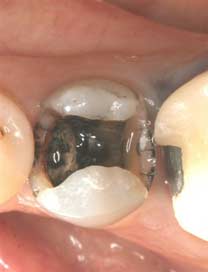
Example 2:
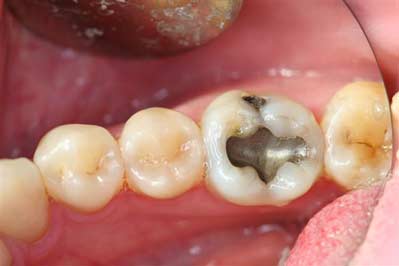
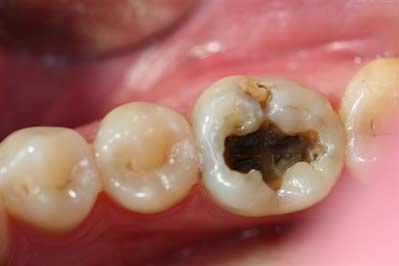
Example 3:
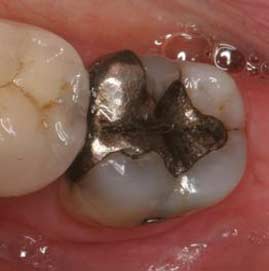
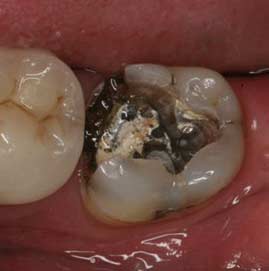
For an exhaustive look at this subject see the article
Mercury-Amalgam Fillings…
